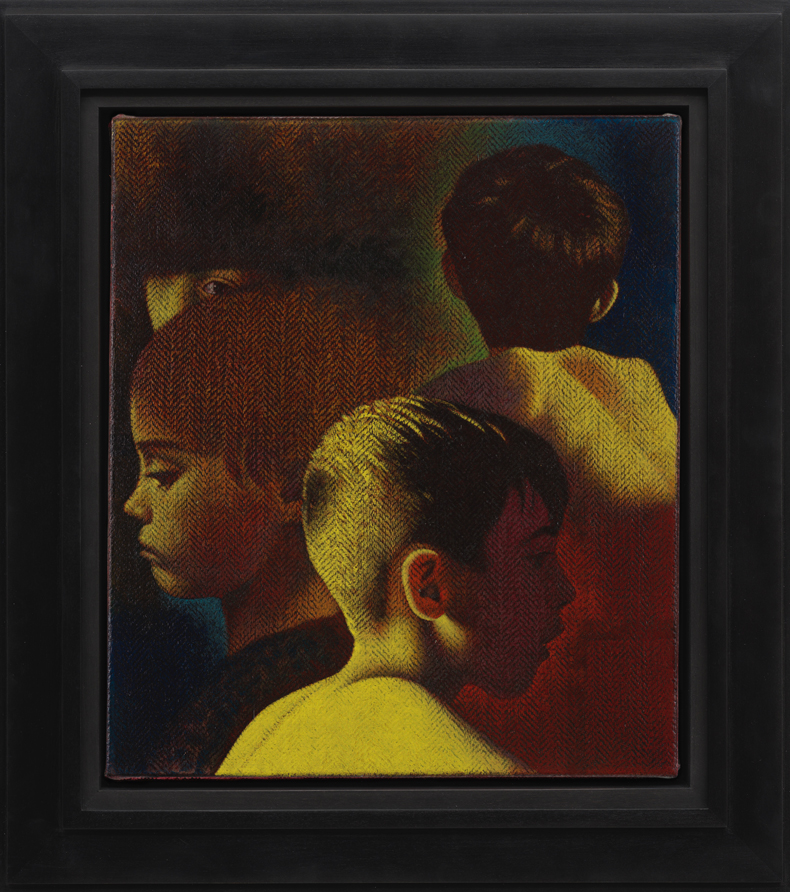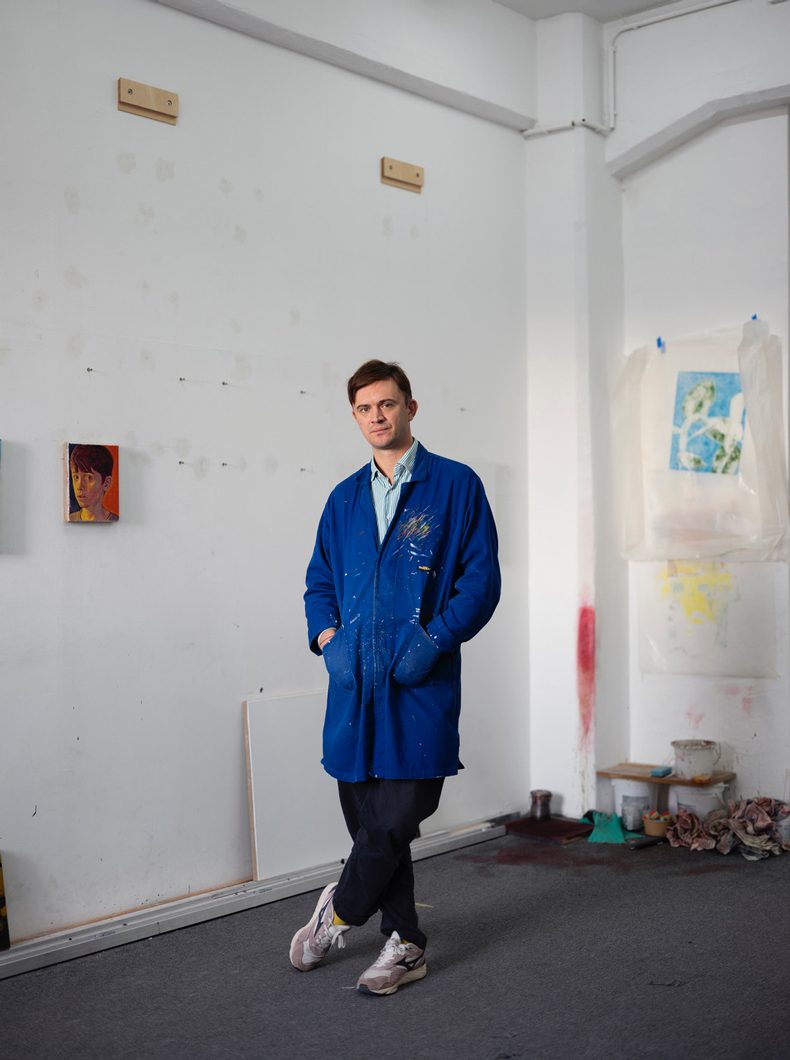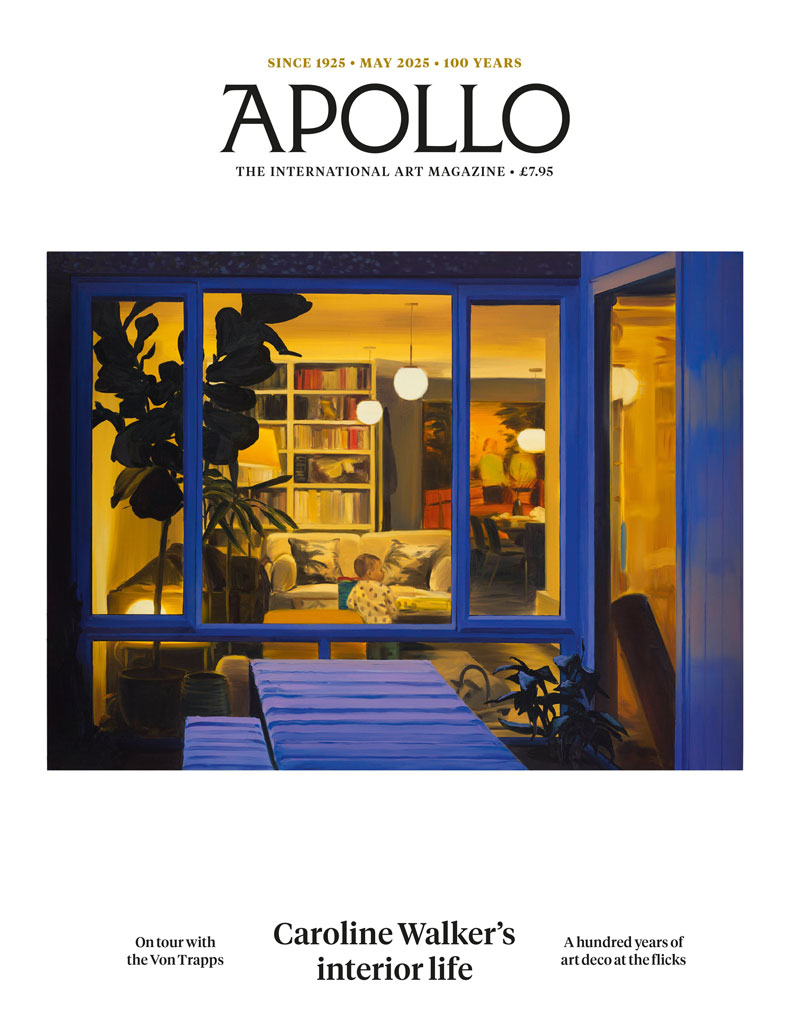For the artist Oliver Osborne, 2025 is shaping up to be quite the year. He has one exhibition at Union Pacific in London (until 31 May), and another at Francis Irv in New York (until 14 June); in the autumn a third show is going to open at the Fondazione ICA Milano. Osborne, who was born in Edinburgh but now lives and works in Berlin, is perhaps best known for having repeatedly painted that badge of hipster chic, the rubber plant. He used the plant as his model for eight years, lavishing care and attention on capturing the exact shades of green and the shine of the leaves. But as he tells me when we meet in London, ‘Cézanne obviously makes a painting of apples, not about apples.’ In the same way, Osborne is making a painting of rubber plants, not about rubber plants.
There is something very serious about how Osborne discusses paint, which only heightens the question of what these seemingly figurative works might mean. His work stretches beyond the rubber plant to include reworkings of the Master of Flémalle’s Portrait of a Fat Man (c. 1425), Filippino Lippi’s Portrait of a Youth (c. 1485) and, touchingly, a portrait of his own son. Like the rubber plants, these motifs are revisited, gone over again and again – shifting in the re-execution, an idea being worked out. ‘At some point,’ Osborne says, ‘I feel like [the motifs] have become mine, and I can use them in some other way.’ Though what that other way might be is never predetermined, ‘things do shift. I mean, that’s just the mechanics of boredom […] if I’m feeling a bit empty of source material, I will literally just go back to a place […] and say, “Okay, well, let’s just start from there again.” And it always ends up somewhere else.’

Untitled (2025), Oliver Osborne. Photo: Nick Ash; courtesy the artist and Francis Irv, New York; © the artist
The questions embodied by these repetitions reveal an artist interested in surface in the most profound way. ‘How do you make a thing that is made of mud talk about light?’ he asks of paint. ‘All of the technical explorations are about how you can get as much out of this thing, out of a surface which is really only a couple of millimetres deep but can contain a sort of fairly limitless potential for depth.’
His versions of Lippi’s Portrait of a Youth are painted on herringbone linen. The texture of the fabric breaks through that millimetre-deep surface to show the workings behind the making of the painting. ‘I’m taking off paint as much as I’m adding,’ says Osborne, ‘and sometimes that will mean using sandpaper, or it will mean using kitchen roll.’ Osborne also sees a useful reference in this. ‘In Francis Bacon, you can see where he used corduroy, and that leaves these lines which become sort of mechanical. There’s a lot of paintings I’ve made where you might get left with the kind of dot pattern of a kitchen roll, and the herringbone does something similar. It adds another layer of interference into the surface, which to some extent operates against the image or the motif, but it also brings in this level of a possibly mechanical kind of surface. And that is interesting, because you’re sort of aware that the mechanical operates somewhere in the world and somewhere in the painting, but it complicates it.’

Portrait of a Youth (after Filippino Lippi) II (2025), Oliver Osborne. Courtesy the artist and Union Pacific; © the artist
In one of the largest paintings, Ooh!, from which the Union Pacific exhibition takes its title, you can see the word ‘Ooh!’ carefully painted in pale grey against a yellow background. Behind it is a shadow of the word, but rather than being an exact shadow, the outlines of the letters are rounded. The typefaces don’t match. At the heart of this work is a word whose reception is entirely dependent on how the word is sounded. Merely written down it gestures at many meanings. It points to the complications of all of Osborne’s work – what does the paint on the canvas represent? Is representation even the point? Perhaps the paintings are just records of complications, interruptions to meanings, what Osborne, referring to the distance between the main ‘Ooh!’ and its shadow, calls ‘misregistration’.
It comes back, almost inevitably, to Cézanne and his apples. ‘I quite like it if my paintings are fairly clear in what they contain so you can say, “That is a young boy with a green background,” or whatever it is, and you can name things. We can always name things we know […] But naming it doesn’t make it any less complicated.’

Ooh! (2025), Oliver Osborne. Courtesy the artist and Union Pacific; © the artist
After all, we can name the rubber plant easily. But it doesn’t appear in Osborne’s work just because he likes the look of them. The rubber plants started when his wife bought one and put it in the couple’s bedroom. ‘It was there, at the end of the bed,’ says Osborne. They are, in some oblique way, a reference to his relationship with his wife – ‘the paintings have always had an element of her in them.’
As paintings of his son appear in the exhibitions it is obvious that the references to his own life are becoming less oblique and more overt – a decision that was spurred by seeing Cézanne’s portraits of his son at the Tate retrospective in 2022. Or as Osborne puts it, ‘Okay, let’s just sort of be a proper painter and paint the things around me.’ But as the attention to surfaces suggests, there’s nothing superficial about this inclusion of subjects that are close to him. In fact, just as with the naming of things, it might appear to be the simplest and easiest thing to do but it comes with many complexities. And that’s the thing about Osborne’s art. Just like the Old Masters to whom he refers, the more you look, the more you see the cross-currents and difficulties that go into making something that might seem straightforward on the surface but conceals knotty conceptual problems that are endlessly enjoyable to tangle with. Some might think of this as the problem with paint, but to use Osborne’s words, ‘that’s the magic’.

Oliver Osborne in his studio. Photo: © Albrecht Fuchs
‘Ooh!’ is at Union Pacific, London, until 31 May; ‘Comic Sans’ is at Francis Irv, New York, until 14 June; and ‘The Sleeping Guard’ is at Fondazione ICA Milano from 26 September–8 November.



 Do portraits have an image problem?
Do portraits have an image problem?










![Masterpiece [Re]discovery 2022. Photo: Ben Fisher Photography, courtesy of Masterpiece London](http://zephr.apollo-magazine.com/wp-content/uploads/2022/07/MPL2022_4263.jpg)
Why it’s time to stop rediscovering Eileen Gray